
What Is the Average Churn Rate for SaaS & 10 Tactics To Minimize It
Are you curious about what the average churn rate for SaaS is?
SaaS businesses are typically subscription-based, where they should provide continuous value to customers and ensure repeat purchases. Thus, one of the most important goals for SaaS companies is to reduce churn and retain as many existing customers as possible.
So, let’s see the average churn rate in your industry and how you can minimize churn to boost customer retention.
Try Userpilot Now
See Why 1,000+ Teams Choose Userpilot

What is customer churn?
Customer churn refers to the number of customers who stopped paying for or using your product or service over a specific period.
Customer churn vs revenue churn
Tracking churn involves measuring both customer churn and revenue churn.
Customer churn measures the percentage of customers who canceled their subscriptions over a particular time frame. On the other hand, revenue churn measures the percentage of revenue lost because of these cancellations.
You need to measure revenue churn to understand the impact of customer churn on revenue. SaaS businesses typically observe churn month by month. Thus, in most cases, the revenue here refers to the monthly recurring revenue.
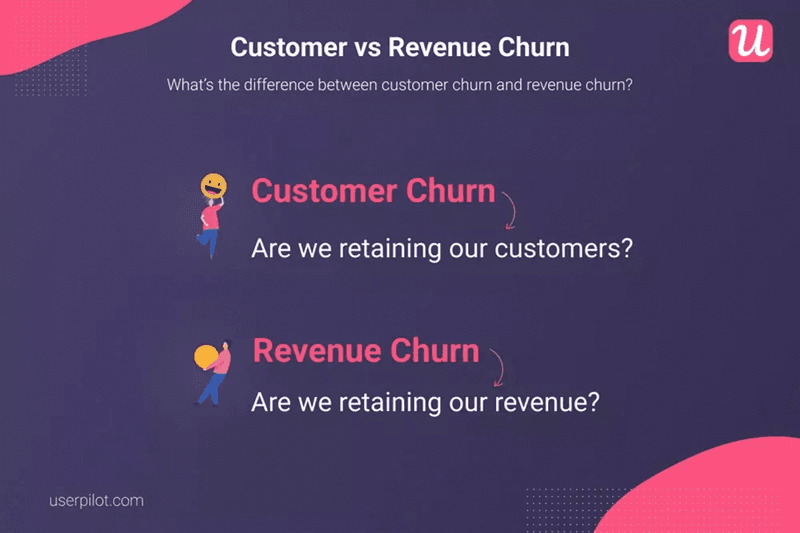
Why does customer churn happen?
According to research conducted by Accenture, customer churn makes US businesses lose approximately $1.6 trillion annually.
The reason behind churn varies from one customer to another. However, research shows that there are 5 common reasons for churn, namely poor customer tickets, involuntary churn, wrong product-market fit, bugs, glitches, and downtime.
- Customer support serves as the backbone of SaaS businesses. This is because your customer support determines a key part of the user experience. Inadequate or late resolution of issues can frustrate customers and even drive them to churn.
- Moreover, bugs, glitches, and downtimes harm the user experience. Failure to fix these issues increases the churn rate. The customer experience should at least meet users’ expectations to keep them satisfied.
- Wrong product-market fit means that your product is failing to satisfy your target market. Your target customers need to find value in your product to adopt it.
All the issues discussed above lead to voluntary churn. But what does it mean when customers churn involuntarily?
Involuntary churn takes place when users are ‘forced’ to leave your product or service. This usually happens due to payment failures caused by inaccurate or backdated information. But because this type of churn is beyond the control of users, it’s not accounted for while calculating retention.
How to calculate the churn rate?
The customer churn rate is one of the most crucial product-led growth metrics.
To measure this metric, divide the number of churned customers within a specific period by the total number of customers present at the start of that period, and multiply the ratio by 100.
Suppose you had 1200 customers at the beginning of December, and by the end of the month, this number dwindles to 900. This would make your churn rate for the month:
(1200-1100)/1200*100% = 8.33%
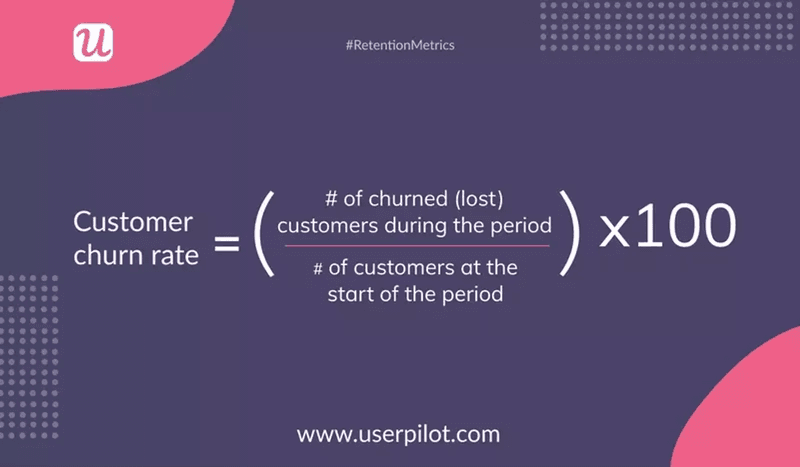
You should monitor churn regularly to get a better understanding of how satisfied your customers are with your product and how healthy your business is.
You can track the customer churn rate weekly, monthly, and annually. But most businesses typically measure it either yearly or monthly.
What’s the average churn rate for SaaS?
The average churn rate for SaaS businesses is about 5%, whereas a ‘good’ churn rate is 3% or less.
However, keep in mind that there is no universally ‘average’ churn rate. The average churn rates differ greatly across different industries and companies. So you need to have good knowledge of your industry’s average churn rate and determine which rate suits your company’s financial health.
Monthly churn rate benchmarks for SaaS companies
Although the average monthly churn rate for SaaS companies is around 1%, small and medium-sized businesses and startups should keep it under 5%. This means that the churn rate found in the example earlier suggests more customers are dissatisfied with your product than is acceptable.
Annual churn rate benchmarks for SaaS companies
Here are the average annual churn rates for SaaS businesses:
- Logo (customer) churn rate: 1-2% for larger businesses and 3-7% for smaller businesses.
- Gross MRR: 1% for larger businesses and 2-2.5% for smaller businesses.
- Net MRR: 2% for most businesses.
- Net revenue churn rate: 5-7% for larger businesses and 10-15% for smaller businesses.
10 Tactics to prevent and minimize customer churn
Churn is inevitable. However, you can maintain it within the average churn rate for SaaS. Here are 10 strategies to help you do that.
Use welcome screens to capture customer data and create a personalized flow
Welcome screens are not only helpful for greeting customers but also for collecting data. The example below shows how Kontentino uses its welcome screen to know where its users came from and why they need this product.
This allows you to segment users based on their responses. You can then personalize their onboarding experiences from the beginning and only offer relevant content and features.
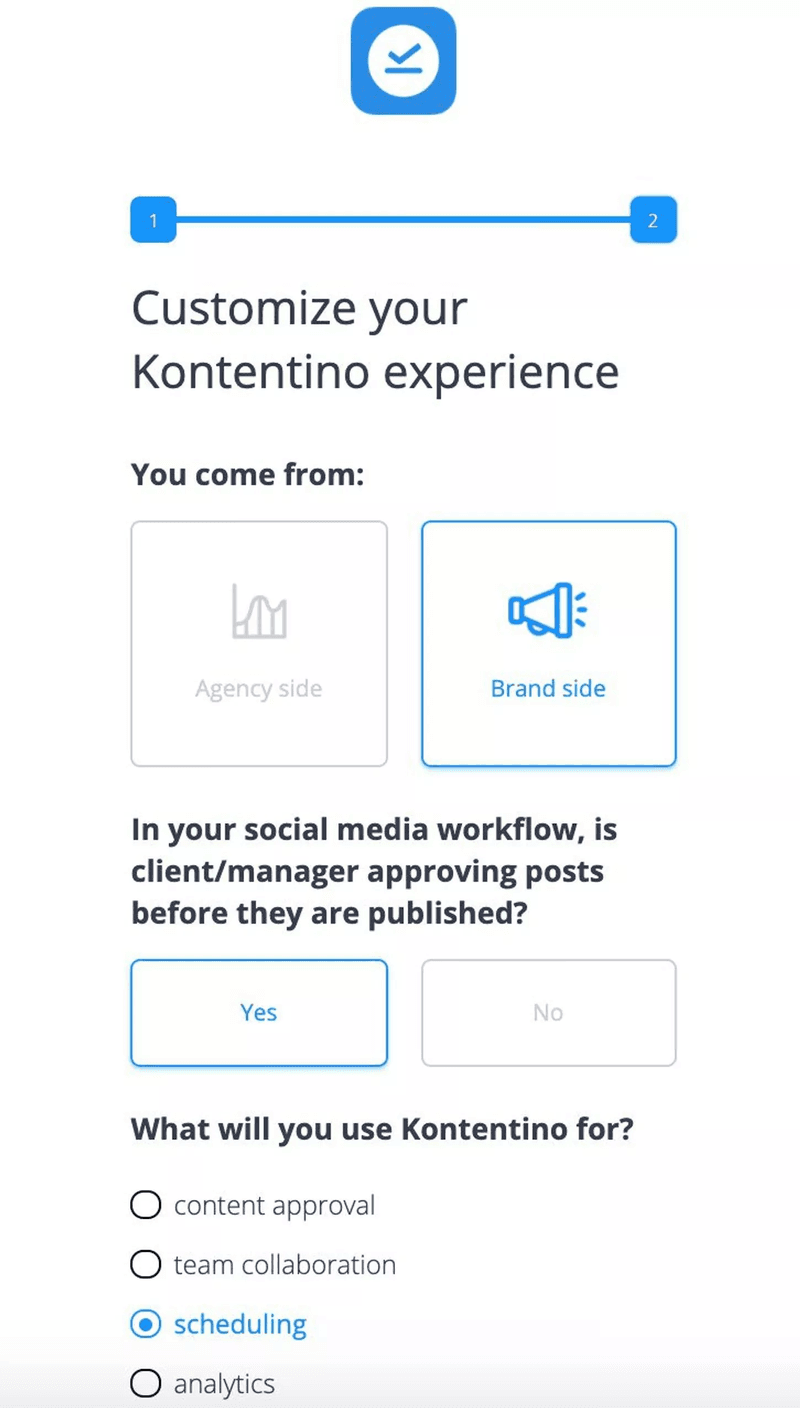
Use interactive walkthroughs to guide customers and reduce time-to-value
While product tours dump a lot of information in one go, interactive walkthroughs are much more concise and engaging.
Walkthroughs are highly contextual and can easily guide users on using a certain feature or performing a specific event. The learn-by-doing approach helps users experience the value of your product much faster, thereby reducing the time-to-value.
Here’s a walkthrough by Kommunicate that teaches users to style their chat widgets.
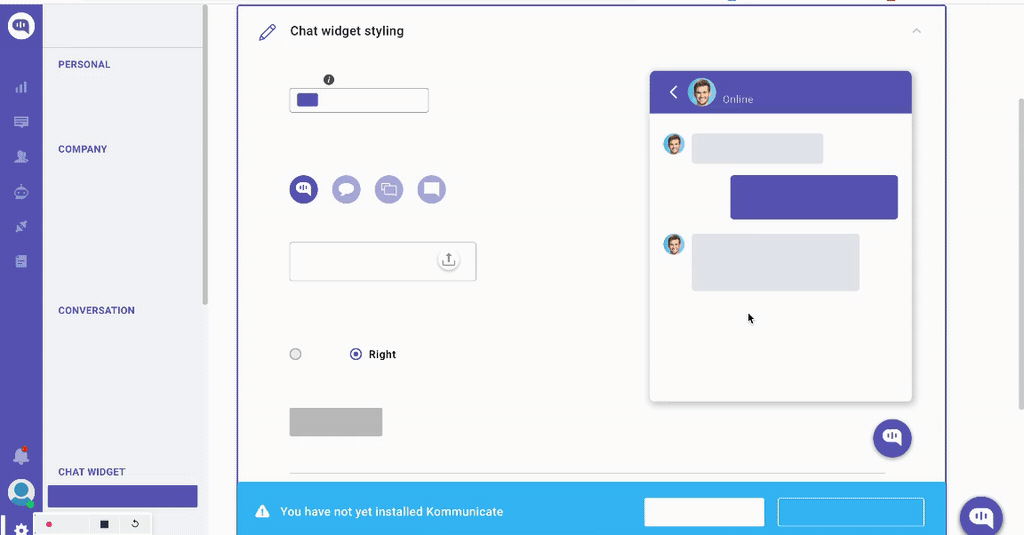
Track product usage and segment customers to trigger contextual flows
You cannot understand your customers well enough unless you know what they do inside your product and how they engage with different features.
Userpilot lets you track interactions such as clicks, text inputs, and hovers. You can use the insights to tag features using labels like ‘easy to use’. This helps you know your most used features as well as the ones that need improvements or are not demanded at all.
Furthermore, you can check how customers engage with a particular feature within different user segments.
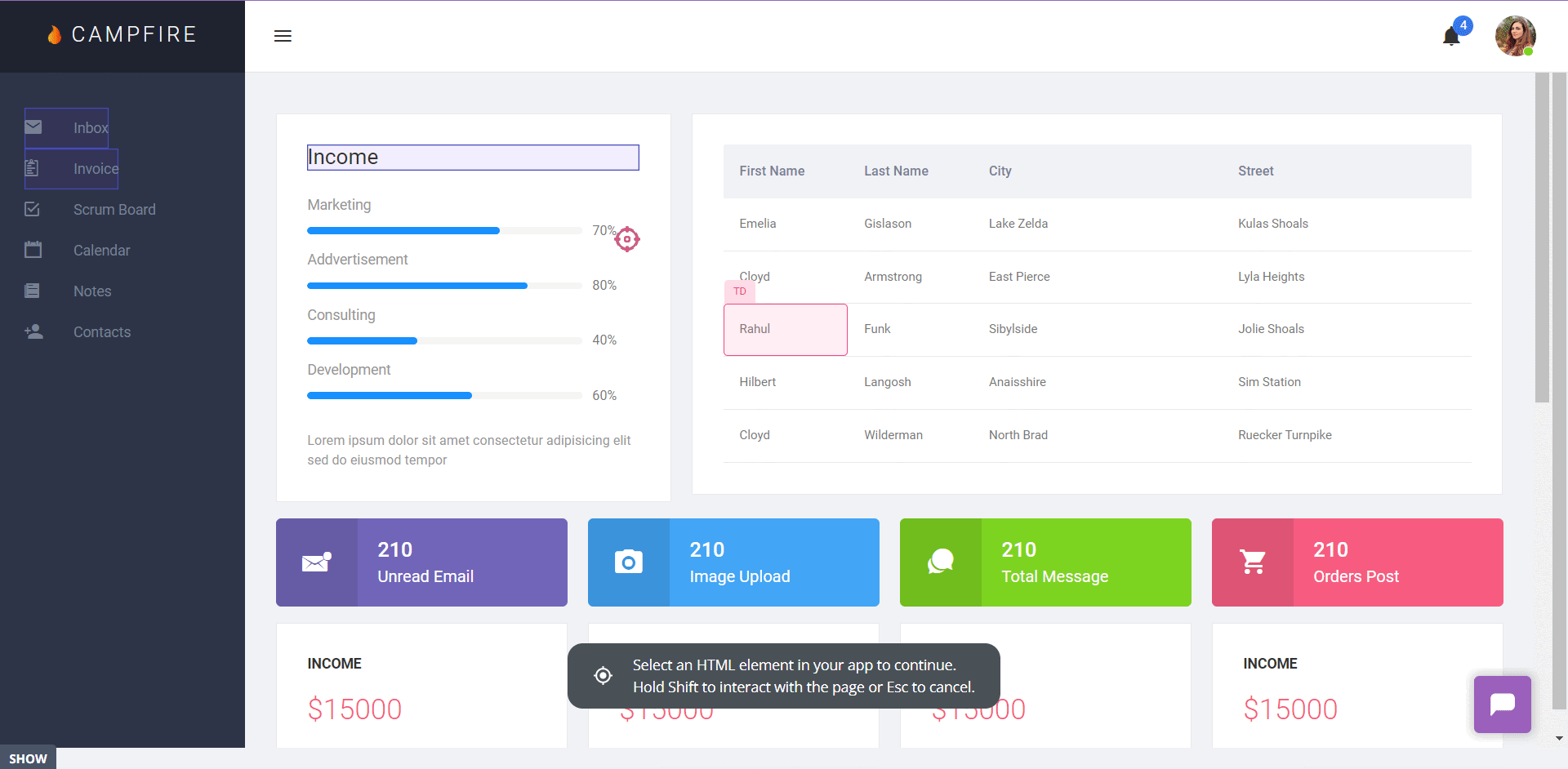
Use the data collected to segment customers based on certain common characteristics. This enables you to trigger relevant experience flows to the right users at the right time.
Userpilot’s advanced segmentation functionality helps you segment customers based on multiple criteria like company data and NPS scores.
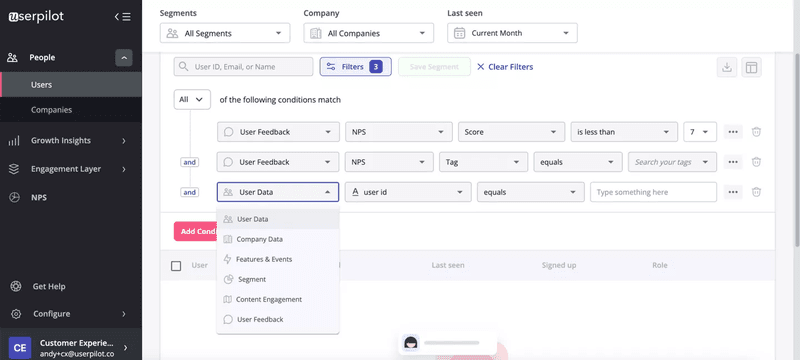
Use in-app banners to prevent involuntary churn
Involuntary churn results in missed opportunities when people fail to make payments. To prevent that, place banners in the app to remind users about payment card expirations, failures, etc.
You can use an in-app reminder like the one shown below. It will be much more effective than emails, which users might not open in the first place.
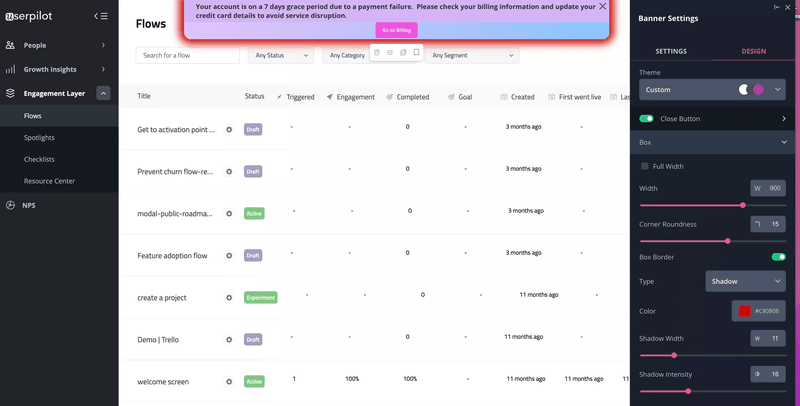
Use microsurveys to collect feedback across various stages of the user journey
Send microsurveys to gather customer feedback. This allows you to understand your customers on a deeper level and improve your product’s usability.
Surveys like Net Promoter Score (NPS) surveys and customer satisfaction (CSAT) score surveys are great for capturing user sentiment about your product or service.
You should send micro surveys at multiple touchpoints across the user journey so that you don’t miss out on any customer issues. You can trigger them to appear after each major milestone or interaction.
Here’s an example of a product-market fit survey from Userpilot.
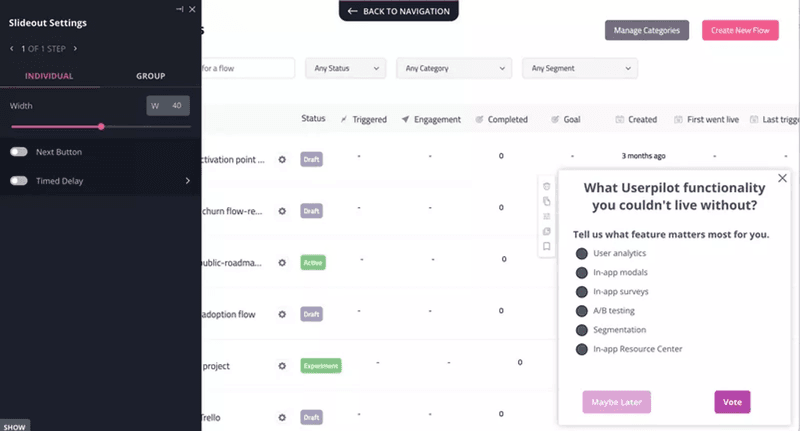
Build an in-app help center to enable self-service support and remove frustrations
In-app help centers let customers solve their problems, especially the common ones, by themselves. Now how does that help you?
As long as customers can serve themselves faster, they are much less likely to be frustrated with your support team. Fewer support tickets also mean that your agents can now focus on more pressing matters.
These help centers can provide self-service support by hosting documentation files, a link to the knowledge base, a live chat widget, FAQs, quick bug fixes, and more.
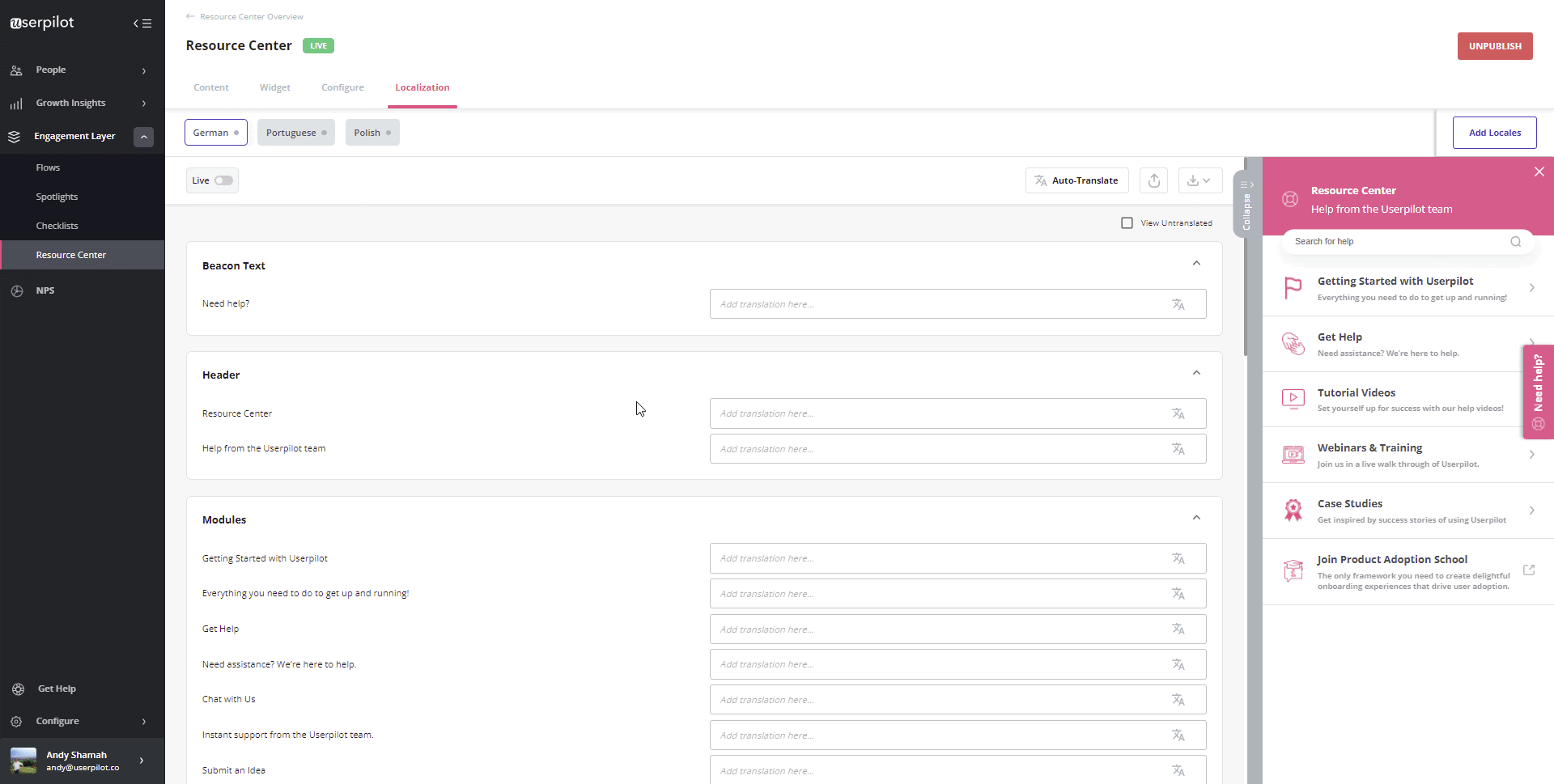
Use heatmaps to determine friction points and fix them
Heatmaps are a visual representation of user activities in your app or website. These maps use color-coded figures to compare various elements, such as clicks and hovers, and discover trends in user behavior.
The heatmaps help you find bugs, friction points, and areas that lack functionality. They also offer valuable insights into your most popular features and what you can do to improve the others.
You need to follow up on these findings and fix the issues before they escalate or drive users to the verge of churn.
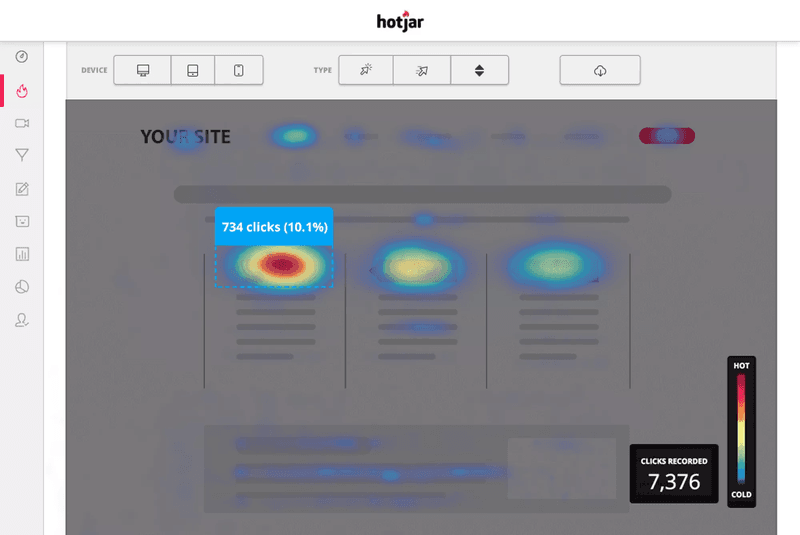
Send NPS surveys to measure customer loyalty and identify detractors
NPS surveys ask users how likely they are to recommend your product to others on a scale from 1 to 10. The results give you three groups of customers:
- Promoters: who give you a score of 9 or 10. They are your loyal customers.
- Passives: who give you a score of 7 or 8. They tend to be indifferent to your product but can be encouraged to become promoters.
- Detractors: who give you a score of 6 or below. They are dissatisfied with your product and, thus, are at high risk of churn.
We recommend you add a qualitative follow-up question to understand the logic behind users’ scores and their pain points.
Here’s an example of a quantitative NPS survey by Slack.
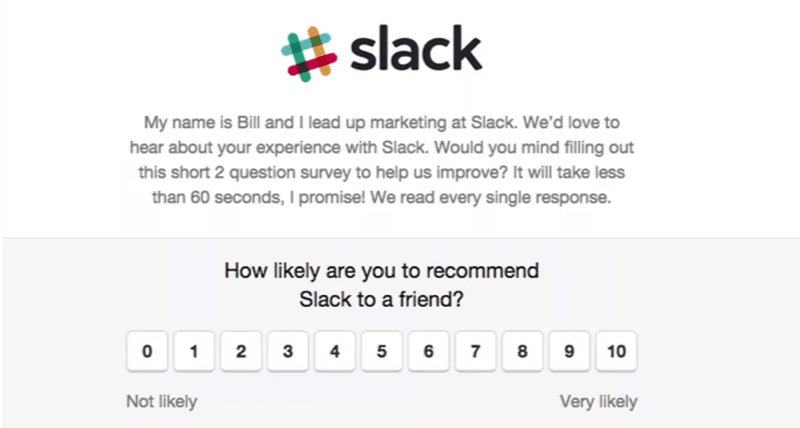
Follow up on negative NPS scores and offer personalized help
Detractors may be inclined to churn, but they can be converted to passives and even promoters.
NPS feedback analysis reveals who your detractors are. With Userpilot, you can tag the NPS responses to learn what users love the most about your product and what they are unhappy with. For example, you can create a tag called ‘missing feature’ or ‘easy UI’.
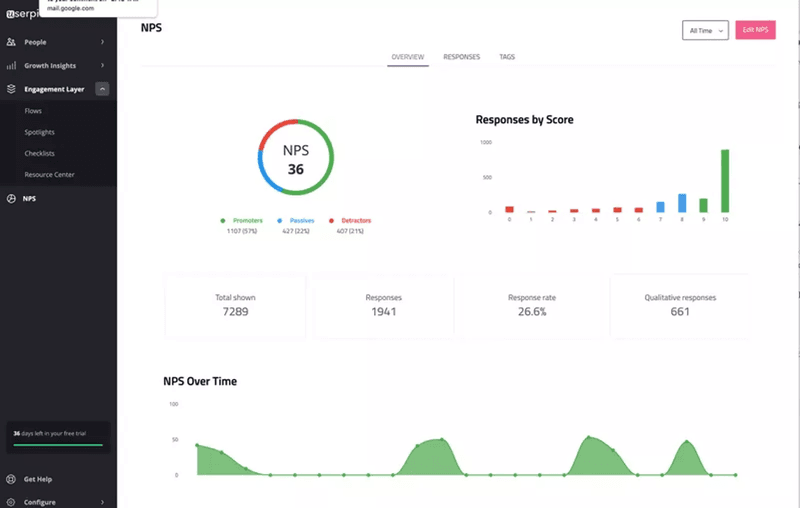
Detractors tend to be inactive in the app, so you can send them personalized emails to understand their problems first and then offer solutions accordingly.
This shows that you care about the voice of your customers. This, along with a successful proactive solution, can even turn detractors into promoters.
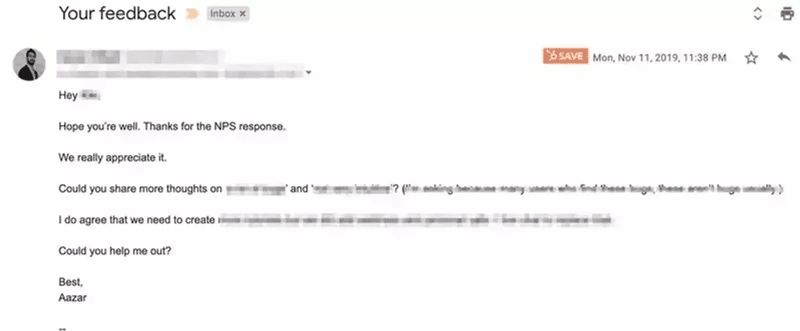
Use exit surveys to understand why customers churn and offer alternative solutions
Did you know that you can sway your customers from churn even at the last moment?
Trigger exit or churn surveys when customers click on the “Cancel Account” button. This allows you to ask customers why they are leaving your product so that you can make improvements for your existing customers and even bring churned customers back.
As shown in the example below, churn surveys tend to have multiple-choice questions, and you can add an optional open-ended question at the end for better understanding.
Moreover, you can provide alternatives to churning, such as downgrading or pausing their subscription. If they can’t be persuaded, you can send customized emails to churned customers after you’ve addressed their grievances.
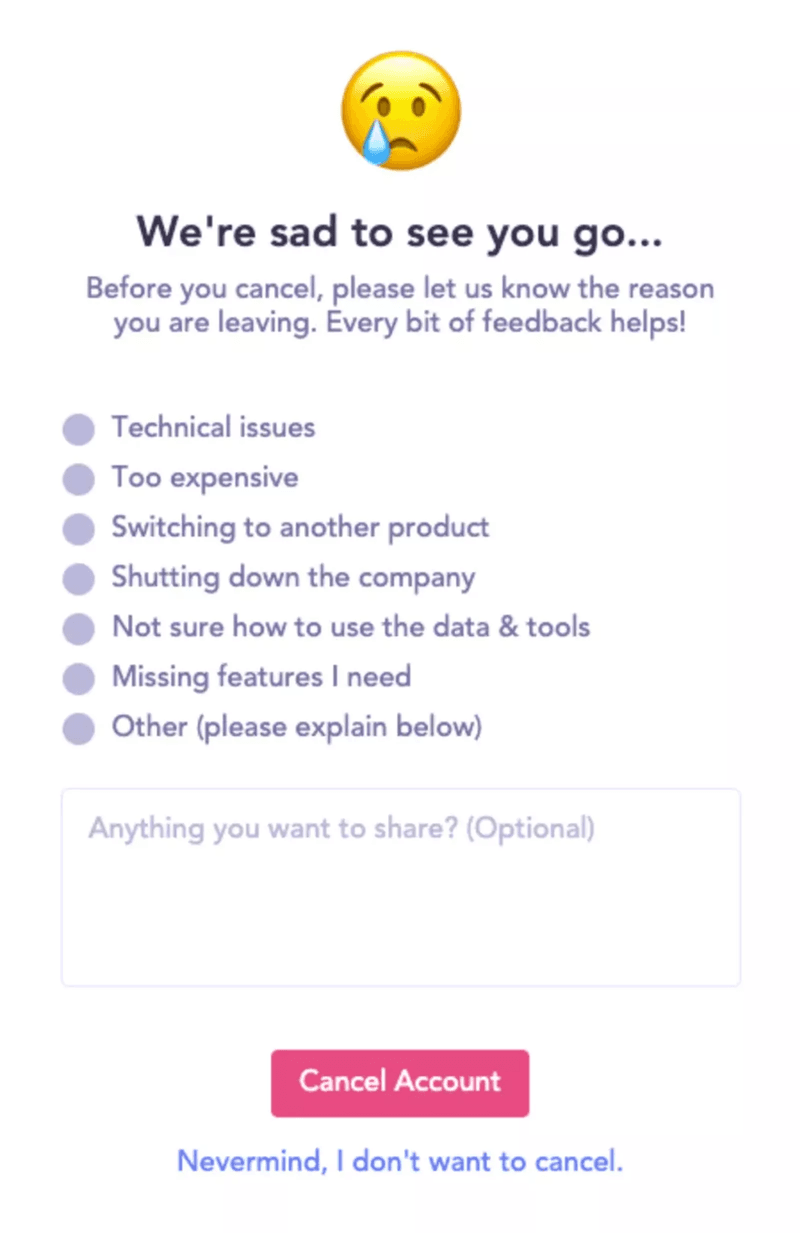
3 Must-have tools to fight churn and boost customer retention
Let’s look at the top three platforms for fighting churn and improving retention.
Userpilot
Userpilot is an onboarding and product adoption platform that helps users achieve product-led growth. It provides a wide range of functionalities, all code-free!
You can create contextual onboarding flows, mobile onboarding flows, and UI patterns like interactive walkthroughs and welcome screens to provide in-app guidance. Plus, you can build an entire in-app help center for your customers.
Userpilot’s advanced segmentation feature allows you to segment customers by applying multiple criteria. In addition, you can tag features to track the feature adoption rate and identify those that need to be improved.
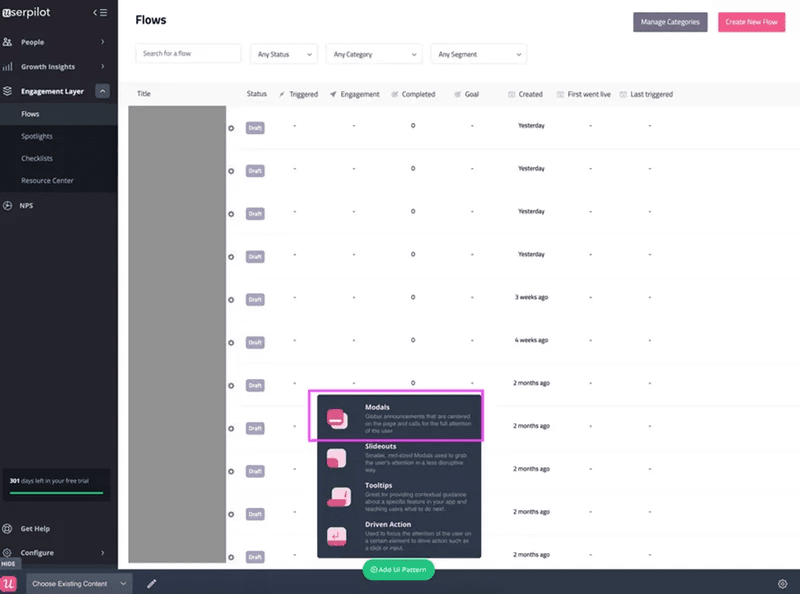
Moreover, you can create different micro surveys, like NPS surveys and mobile surveys, and analyze the results using features like NPS response tagging. This helps you reach out to detractors proactively.
Userpilot offers a 14-day free trial, and its entry-level subscription plan begins at $299/month (billed annually) for up to 2,000 MAUs. It includes in-app user engagement features, segmentation, trend analysis, NPS surveys, and essential product analytics. This plan is ideal for small and mid-market SaaS teams getting started.
Hotjar
Hotjar is an analytics platform that offers an excellent heatmap feature and session recording functionality. It lets you record users’ browser activities while they are using your website, including mouse movements, scrolls, and clicks.
Hotjar’s ‘Basic’ plan is always free and offers unlimited access to heatmaps. Its paid plan ‘Plus’ starts at $32/month, charged annually.
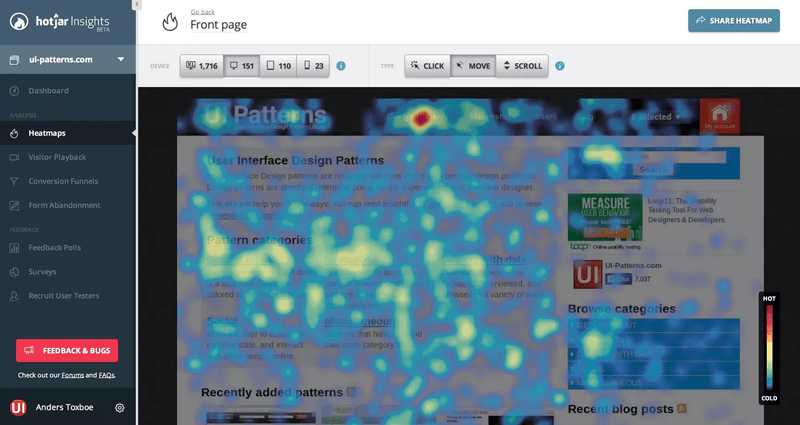
Mixpanel
Mixpanel is another powerful user analytics platform that lets you collect user data in real-time and perform detailed product analytics.
Its ‘Funnel’ feature provides the number of users who convert from one event to the next during a given period so that you can check how they perform events in a series.
Mixpanel has a free plan for those who need up to 100,000 monthly-tracked users. Above that, the next plan, Growth, starts at $25/month.
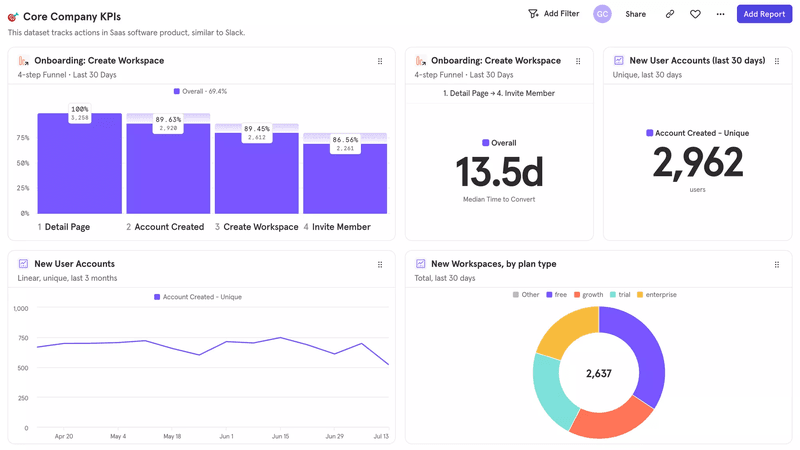
Wrapping it up
Customer retention is the key to the success of your business. To ensure high retention, it’s crucial to get an in-depth understanding of customers and keep churn at a minimum.
Want to keep close to the average churn rate for SaaS? Get a Userpilot demo and start fighting churn effectively.






